
Astronaut’s dreams began in his Alabama youth
By Lindsay Miles
Growing up in rural Alabama, Jim Voss dreamed of space travel, exploration and life beyond our planet. The prolific reader would immerse himself in science fiction novels, captivated by the idea of one day reaching space.
Raised by his grandparents in Opelika, Voss came from humble beginnings, and would go on to be one of the few astronauts from the state, dedicating 10 years to shuttle space flights and conducting an eight-hour and 56-minute spacewalk, the longest to date in 2001 on board the Space Shuttle Discovery.
“I think that my love for reading really shaped what I did later on in my life, because as a kid, I thought being an astronaut would be a wonderful thing to do in life. However, we didn’t have astronauts at that time or a real space program,” Voss says. “I kept these ideas in the back of my mind, and when we did establish a space program, I thought again, ‘what a neat thing to do.’”
Voss went on to receive an Army ROTC scholarship from Auburn University, which he happily accepted. While at Auburn, he was a part of the wrestling team and a member of Theta Xi fraternity, which led to his first date with his future wife, Suzan.
“We were picking sweethearts for our fraternity, and I was assigned to Suzan,” Voss says. “I picked her up for our dinners and social events. She didn’t like me at first, and I understood that completely. I asked her out again after our ‘required’ dating came to an end, and to my surprise, she said ‘yes.’ We went on to date throughout college and got married after she graduated.”
Voss, with another year left to complete his aerospace engineering degree, remained a student at Auburn during their first year of marriage.
“Aerospace engineering was always a good fit for me,” he says. “I enjoyed what I was doing. I wanted to be an astronaut, but when we started producing astronauts, they only used test pilots, and I couldn’t be one because I didn’t have good eyes.”
After graduating from Auburn in 1972, Voss was commissioned as a second lieutenant in the U.S. Army. He spent the first two years after entry into active duty attending the University of Colorado where he received his master’s degree in aerospace engineering in 1974. He then attended U.S. Army Airborne and Ranger schools and was stationed with the 2nd Battalion, 48th Infantry Regiment in West Germany, serving as a platoon leader, intelligence staff officer and company commander. He returned to the United States and attended the Infantry Officer Advanced Course where he taught in the Department of Mechanics at the United States Military Academy in West Point, N.Y.
“In 1978, they started the space shuttle program and selected different kinds of astronauts, including scientists and engineers, who could do more than just fly,” Voss says. “They loosened the eye requirements, and I began applying. I thought they’d created it just for me.”
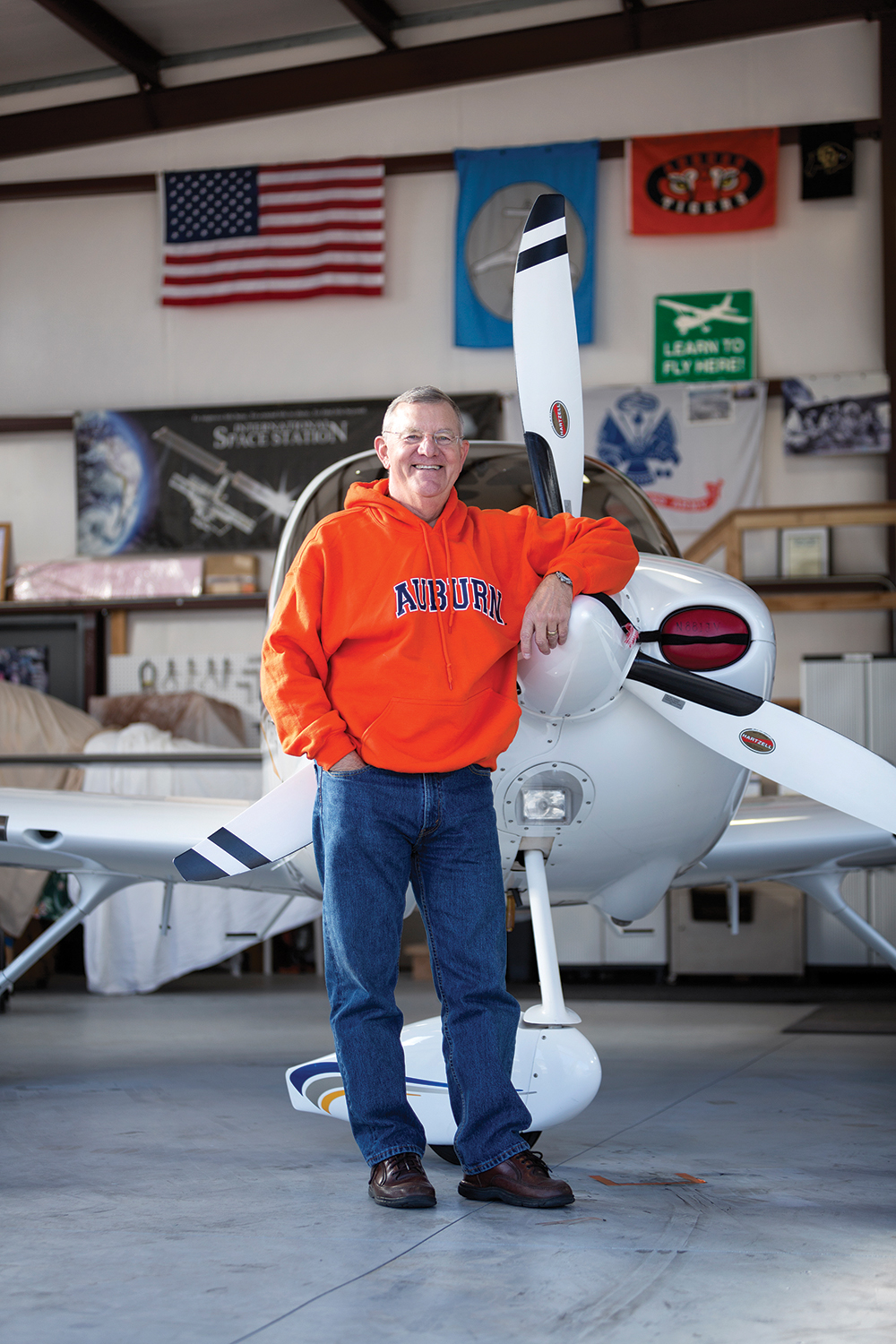
Determination and a dream
His determination to become an astronaut and fulfill his childhood dream was unwavering. Five applications and nine years later, Voss was selected to become a NASA astronaut in 1987. He began training for space shuttle flights as well as training in Russia as a backup crew member to the Mir Space Station. In 1991, Voss began his 10 years of shuttle space flights, including five separate space flights and 163 days as a member of the Expedition 2 crew on the International Space Station.
“You train so much that you really are ready and prepared to go into space,” he says. “NASA does a great job of training, so you have a picture of what it will be like. We spent a lot of time in simulators, did weightless training and experiments. It’s like training for a sporting event. A basketball team will do a lot of dribbling practice, then passing practice, then piece it all together.”
Of all of his flights, Voss says his very first ascent into space was the most exciting.
“You’re anticipating so many things and they’re all happening so fast that you don’t have time to savor the moment,” Voss said. “In later flights, you have more appreciation for the finer parts of it. There are things that you truly can’t simulate until you’re in space. The view out the window cannot be simulated. Pictures or movies can’t do it justice.”
Since his retirement from NASA in 2003, Voss has been a professor and associate dean of engineering at Auburn, vice president for space exploration systems at the Transformational Space Corporation, vice president of engineering for SpaceDev and director of advanced programs at Sierra Nevada Corporation.
In 2009, Voss joined the faculty at the University of Colorado as a full-time scholar in residence. He was inducted into the Alabama Engineering Hall of Fame in 2002 and the Alabama Aviation Hall of Fame in 2001.
Although semi-retired, Voss continues to teach classes on human spaceflight and mentor graduate students at the University of Colorado.
“I find teaching and sharing my experiences with young people to be very satisfying,” said Voss. “All of my experiences have been interesting and rewarding in their own way. I really liked being a solider. It mattered to me that I was serving my country. Being an astronaut was just fantastic. How wonderfully rewarding to be a part of something so exciting that you dream about and work hard to be able to do.”
As for the future of space flight, Voss, a member of the NASA advisory council, says next stop: Mars.
“The long-term goal is to go to Mars and explore a different world in our solar system,” he says. “We’re working on a big rocket to get to Mars, and a lot of that work is being done at the Marshall Space Flight Center in Huntsville. There are so many exciting things in the works, and we’ll see our nation’s space program go even deeper into space in the next 10 years.”
Alabama’s proud space heritage
Alabama has a proud tradition of being both a birthplace and training ground for astronauts. Among them:
 Clifton Williams (1932 – 1967), of Mobile, was a naval aviator, test pilot, mechanical engineer, major in the United States Marine Corps and NASA astronaut. Although he did not travel to space, he served as backup pilot for the mission Gemini 10, which took flight in 1966. He attended Auburn University where he received his bachelor’s degree in mechanical engineering in 1954.
Clifton Williams (1932 – 1967), of Mobile, was a naval aviator, test pilot, mechanical engineer, major in the United States Marine Corps and NASA astronaut. Although he did not travel to space, he served as backup pilot for the mission Gemini 10, which took flight in 1966. He attended Auburn University where he received his bachelor’s degree in mechanical engineering in 1954.
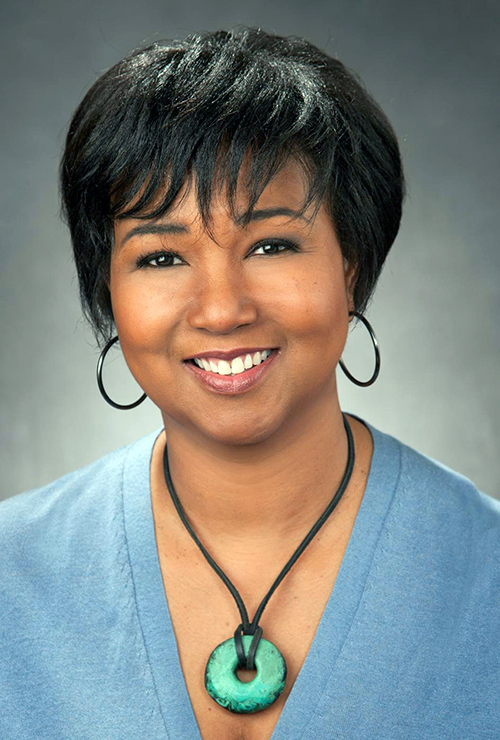 Dr. Mae Jemison (1956 – present), originally of Decatur, became the first African-American woman to travel in space while aboard the Space Shuttle Endeavour in 1992. She served six years as a NASA astronaut and has since founded and leads the 100 Year Starship, an initiative of the Defense Advanced Research Project Agency, to assure the capability for human interstellar space travel. Among her many honors and awards, Jemison is a member of the National Academy of Sciences, Peace Corps Medical Officer for Sierra Leone and Liberia, and professor of environmental studies at Dartmouth College. She received her bachelor’s and master’s degrees from Stanford University and went on to receive her medical degree at Cornell University.
Dr. Mae Jemison (1956 – present), originally of Decatur, became the first African-American woman to travel in space while aboard the Space Shuttle Endeavour in 1992. She served six years as a NASA astronaut and has since founded and leads the 100 Year Starship, an initiative of the Defense Advanced Research Project Agency, to assure the capability for human interstellar space travel. Among her many honors and awards, Jemison is a member of the National Academy of Sciences, Peace Corps Medical Officer for Sierra Leone and Liberia, and professor of environmental studies at Dartmouth College. She received her bachelor’s and master’s degrees from Stanford University and went on to receive her medical degree at Cornell University.
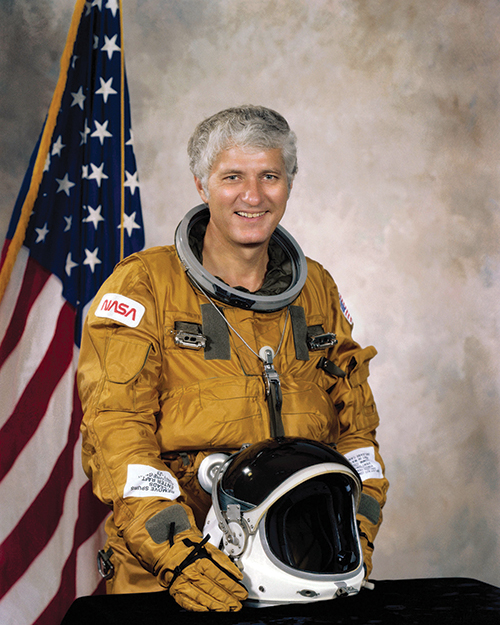 Henry W. “Hank” Hartsfield (1933 – 2014) was born in Birmingham, in 1933. He graduated from Auburn University in 1954 where he was a part of the Reserved Officer Training Corps (ROTC). He began graduate school at Duke University but was called into active duty a year later by the Air Force. While stationed in North Carolina, Hartsfield met and married Judy Frances Massey.
Henry W. “Hank” Hartsfield (1933 – 2014) was born in Birmingham, in 1933. He graduated from Auburn University in 1954 where he was a part of the Reserved Officer Training Corps (ROTC). He began graduate school at Duke University but was called into active duty a year later by the Air Force. While stationed in North Carolina, Hartsfield met and married Judy Frances Massey.
Following a tour in Bitburg, Germany, Hartsfield was selected for the USAF Test Pilot School. He graduated in 1965 and remained as an instructor until October 1966 when he was selected as a military astronaut on the Manned Orbiting Laboratory (MOL) Program. The program was canceled in 1969 and Hartsfield was assigned to NASA as an astronaut.
Hartsfield held various positions with the Astronaut Office, most significantly providing the pilot’s input on the development of the space shuttle entry flight control system. He piloted Space Shuttle Columbia’s fourth and final orbital flight test in June 1982, commanded the first flight of Space Shuttle Discovery in August 1984 and commanded Space Shuttle Challenger on the German D-1 Space lab mission in October 1985.
Hartsfield retired from NASA in 1997 and joined Raytheon, serving as vice president for aerospace engineering services in Houston. He retired from Raytheon in April 2005.
 Jan Davis (1953 – present), a veteran of three space flights, began working for NASA’s Marshall Space Flight Center as an aerospace engineer in 1979 and was soon selected as an astronaut. Davis has logged more than 673 hours in space. The Huntsville native retired from NASA in 2005 and began working with Jacobs Technology as vice president and general manager. She has been inducted in the Alabama Aviation Hall of Fame, the Alabama Engineering Hall of Fame and the Presidential Rank Award of Meritorious Executive. Davis received a bachelor’s degree in applied biology from the Georgia Institute of Technology, another bachelor’s degree in mechanical engineering from Auburn University, and master’s and doctorate degrees in mechanical engineering from the University of Alabama at Huntsville.
Jan Davis (1953 – present), a veteran of three space flights, began working for NASA’s Marshall Space Flight Center as an aerospace engineer in 1979 and was soon selected as an astronaut. Davis has logged more than 673 hours in space. The Huntsville native retired from NASA in 2005 and began working with Jacobs Technology as vice president and general manager. She has been inducted in the Alabama Aviation Hall of Fame, the Alabama Engineering Hall of Fame and the Presidential Rank Award of Meritorious Executive. Davis received a bachelor’s degree in applied biology from the Georgia Institute of Technology, another bachelor’s degree in mechanical engineering from Auburn University, and master’s and doctorate degrees in mechanical engineering from the University of Alabama at Huntsville.
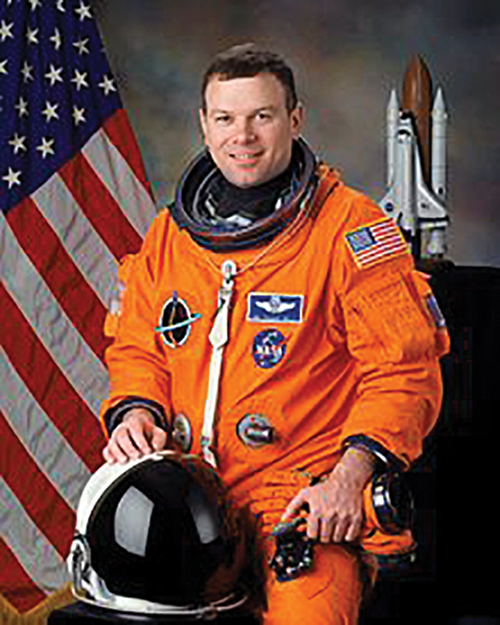 Jim Kelly (1964 – present) is a NASA Astronaut and retired colonel with the United States Air Force. Selected by NASA in April 1996, Kelly reported to the Johnson Space Center where he completed two years of training and evaluation. He served as pilot on two shuttle missions. Initially, Kelly was assigned to the Astronaut Office Flight Support Branch where he served as a member of the Astronaut Support Personnel team responsible for shuttle launch preparation. He graduated with a bachelor’s degree in astronautical engineering from the United States Air Force Academy, and received his master’s degree in aerospace engineering from the University of Alabama in 1996.
Jim Kelly (1964 – present) is a NASA Astronaut and retired colonel with the United States Air Force. Selected by NASA in April 1996, Kelly reported to the Johnson Space Center where he completed two years of training and evaluation. He served as pilot on two shuttle missions. Initially, Kelly was assigned to the Astronaut Office Flight Support Branch where he served as a member of the Astronaut Support Personnel team responsible for shuttle launch preparation. He graduated with a bachelor’s degree in astronautical engineering from the United States Air Force Academy, and received his master’s degree in aerospace engineering from the University of Alabama in 1996.
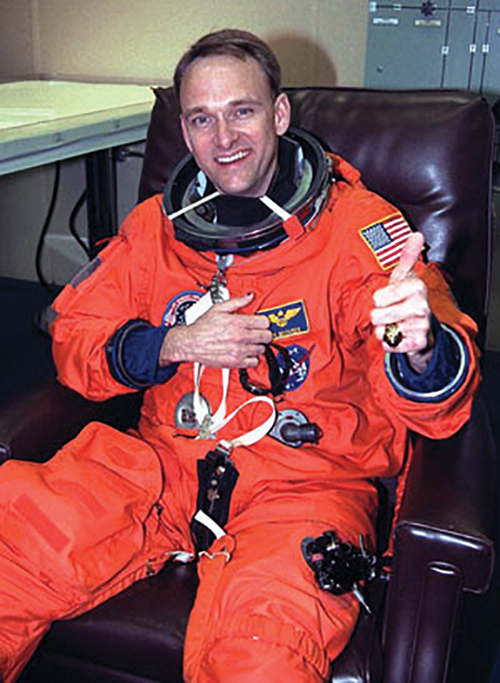 Joe Edwards (1958 – present), a Lineville native, is an aerospace engineer, former naval officer and aviator, test pilot and NASA astronaut. He has flown 4,000 hours in more than 25 different aircrafts and logged more than 650 carrier-arrested landings. In October 1991, while serving as maintenance officer of VF-142, he was flying over the Persian Gulf when the radome separated from his airplane and destroyed his canopy. Edwards sustained a collapsed lung and broken arm, but managed to land aboard the aircraft carrier USS Dwight D. Eisenhower. He was awarded the Distinguished Flying Cross for his airmanship. Edwards received his bachelor’s degree from the United States Naval Academy and his master’s degree from the University of Tennessee.
Joe Edwards (1958 – present), a Lineville native, is an aerospace engineer, former naval officer and aviator, test pilot and NASA astronaut. He has flown 4,000 hours in more than 25 different aircrafts and logged more than 650 carrier-arrested landings. In October 1991, while serving as maintenance officer of VF-142, he was flying over the Persian Gulf when the radome separated from his airplane and destroyed his canopy. Edwards sustained a collapsed lung and broken arm, but managed to land aboard the aircraft carrier USS Dwight D. Eisenhower. He was awarded the Distinguished Flying Cross for his airmanship. Edwards received his bachelor’s degree from the United States Naval Academy and his master’s degree from the University of Tennessee.
 Kathryn “Kay” Hire (1959 – present) is a Mobile native, NASA astronaut, and captain in the U.S. Navy Reserve. Hire has flown aboard two space missions including the Space Shuttle Columbia. She received her bachelor’s degree in engineering and management from the United States Naval Academy and her master’s degree in space technology from the Florida Institute of Technology. Her most recent space flight was in 2010 when she journeyed to the International Space Station as a Mission Specialist for Space Shuttle mission STS-130. Her many awards and honors include a NASA Space Flight Medal, War on Terrorism Service Medal and Defense Superior Service Medal, to name a few.
Kathryn “Kay” Hire (1959 – present) is a Mobile native, NASA astronaut, and captain in the U.S. Navy Reserve. Hire has flown aboard two space missions including the Space Shuttle Columbia. She received her bachelor’s degree in engineering and management from the United States Naval Academy and her master’s degree in space technology from the Florida Institute of Technology. Her most recent space flight was in 2010 when she journeyed to the International Space Station as a Mission Specialist for Space Shuttle mission STS-130. Her many awards and honors include a NASA Space Flight Medal, War on Terrorism Service Medal and Defense Superior Service Medal, to name a few.
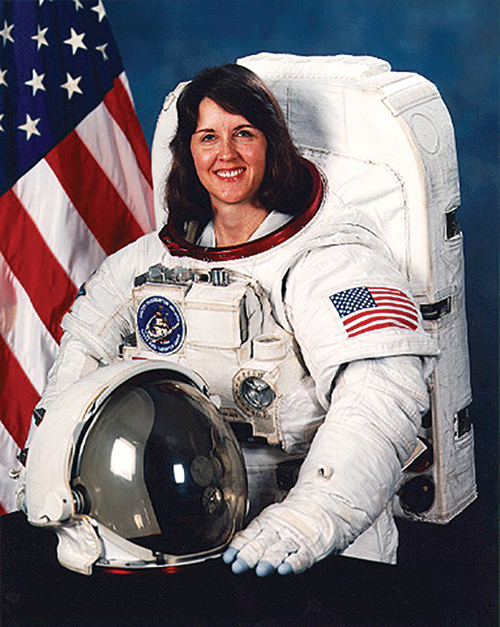 Kathryn Thornton (1952 – present) was the second woman to walk in space, setting a record for the number of spacewalks and total time spent on spacewalks. The Montgomery native logged more than 16 million miles in orbit and was the first woman to participate in a classified U.S. Government space mission. She was a member of the first crew to return to orbit following the 1986 Challenger disaster. Thornton went on to complete three more shuttle flights during her time with NASA. She graduated from Auburn University in 1974 and then went on to receive her master’s and doctorate degrees in physics from the University of Virginia, where she is currently a professor of mechanical and aerospace engineering.
Kathryn Thornton (1952 – present) was the second woman to walk in space, setting a record for the number of spacewalks and total time spent on spacewalks. The Montgomery native logged more than 16 million miles in orbit and was the first woman to participate in a classified U.S. Government space mission. She was a member of the first crew to return to orbit following the 1986 Challenger disaster. Thornton went on to complete three more shuttle flights during her time with NASA. She graduated from Auburn University in 1974 and then went on to receive her master’s and doctorate degrees in physics from the University of Virginia, where she is currently a professor of mechanical and aerospace engineering.
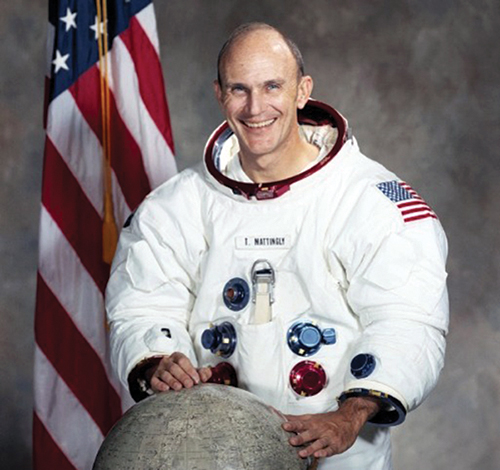 Ken Mattingly (1936 – present) is a former naval officer and aviator, flag officer, aeronautical engineer, test pilot, rear admiral in the United States Navy and NASA astronaut who flew on the Apollo 16, STS-4 and STS-51-C missions. He was scheduled to fly on Apollo 13, but was held back due to concerns about a potential illness. He later flew as Command Module Pilot for Apollo 16, making him one of only 24 people to have flown to the Moon. He attended Auburn University where he received his bachelor’s degree in aerospace engineering in 1958.
Ken Mattingly (1936 – present) is a former naval officer and aviator, flag officer, aeronautical engineer, test pilot, rear admiral in the United States Navy and NASA astronaut who flew on the Apollo 16, STS-4 and STS-51-C missions. He was scheduled to fly on Apollo 13, but was held back due to concerns about a potential illness. He later flew as Command Module Pilot for Apollo 16, making him one of only 24 people to have flown to the Moon. He attended Auburn University where he received his bachelor’s degree in aerospace engineering in 1958.




